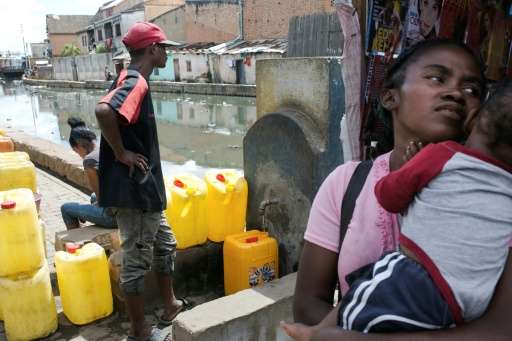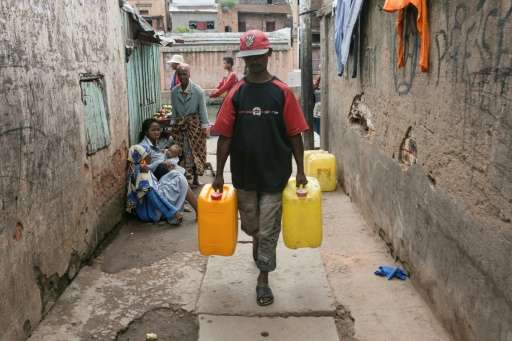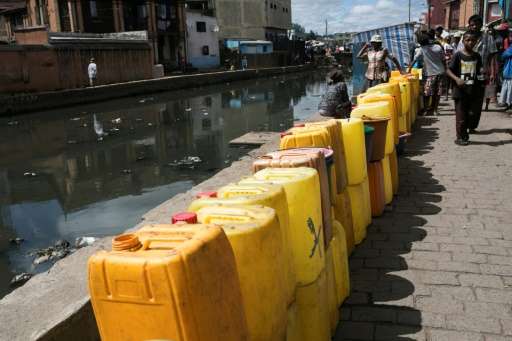Water carriers in Madagascar bear brunt of global crisis

As usual, they get up before dawn and, one by one, place their cans in a neat row at the base of the water pump, ready for another long day of waiting and carrying.
For the water carriers of Antananarivo, the capital of Madagascar, distributing water is a daily physical struggle that has been worsened by regional drought and climate change.
"Today I arrived here at 5:00 am. It is now 8:30 am and I have only been able to fill two cans," Olivia Hanitriniaina Razafinirina, 24, told AFP, ahead of World Water Day on Wednesday.
"Water is life. People need water every day, if there is none everyone suffers."
For the last 10 years, Razafinirina has been heaving water through the slums of the city.
Across the poverty-stricken and undeveloped island of Madagascar, drinking tap water at home is a luxury only few can afford.
After a long wait, Razafinirina fills her two 20-litre (five-US gallon) cans at the unreliable water pump and descends into the maze of cobbled streets of the Andranomanalina Isotry district of the city.
Carrying the heavy cans, she delivers them to shops, businesses and homes.
Some days she will make 20 trips to the public pump and back—carrying a total of 800 litres of water, and leaving her no time to linger with her customers before rushing back to join the long line.
On a good day, Razafinirina will earn just about $1.20 (1.30 euro) in local currency.

"It just allows me to buy something to eat, some rice to cook. There is no other work," she said.
Despite such dire pay, water carriers play a crucial role in Madagascar.
"Only 10 percent of households have a water supply in their house," said senior district official Jean Marc Randriamanga.
"Everyone else must get their water from the pump because there are no wells here."
Water is life
Even at the pump, a small fee must be paid for water, further weighing on the scant resources of local people.
"The price is still expensive, considering the purchasing power of people here," said Randriamanga.
The money goes to the Madagascan utilities company and the local water association, which are jointly responsible for maintaining the supply network and each pump.
"In total, 134 people use this connection," said Sabine Raharimalala, head of the local Tsimialonjafy water users association.
Despite the pumps and the daily exertions of the water carriers, Madagascar is one of the world's worst countries for rural access to clean water.

A WaterAid report released to mark World Water Day said that Papua New Guinea, Madagascar and Mozambique are at the bottom of the table.
In Papua New Guinea, 67 percent of rural people live without access to clean water, in Madagascar it is 65 percent and Mozambique 63 percent.
All three are among the nations most vulnerable to climate change and that are least ready to adapt, the report said.
"It is largely due to lack of funding provided for the needs of drinking water," WaterAid's Lovy Rasolofomanana told AFP, saying about $9 million is spent each year when $200 million is required to achieve "universal access".
"We lose 14,000 children each year to diarrhoea," he said, revealing the grim toll of the island's extreme poverty.
"Lack of water causes so much illness due to poor sanitation."
Severe drought over recent years has also left Madagascar in a food crisis, with nearly a million people hungry and in urgent need of food aid in the south of the island alone, according to the World Food Programme.
Back at the water pump in Antananarivo, the flow slowed to a tickle as the supply network struggled to cope.
A can left in line at 10:00 am will not be full until 3:00 pm.
© 2017 AFP

















